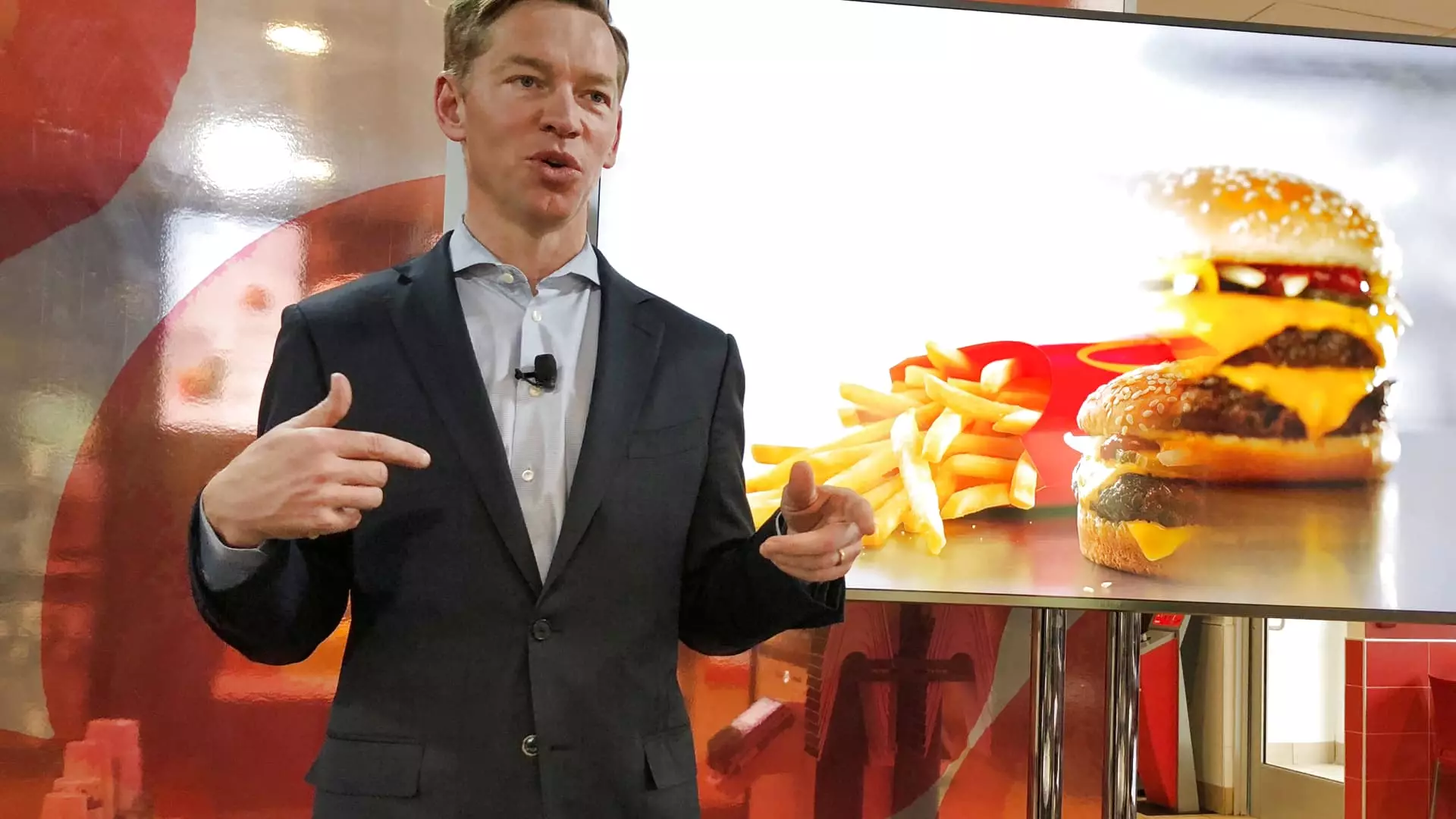In a startling development, McDonald’s found itself at the center of a public health crisis when health authorities connected a deadly E. coli outbreak to its popular Quarter Pounder burgers. This announcement sent shockwaves through the fast-food giant as customers voiced their concerns about food safety. The immediate aftermath saw the swift removal of Quarter Pounders from approximately 900 locations, prompting fears of a significant consumer backlash and a dip in sales. Notably, the company’s CEO, Chris Kempczinski, faced the daunting task of addressing both investors and the public about the implications of this incident for McDonald’s reputation and bottom line.
During a recent earnings call, Kempczinski reassured investors that the situation was now “behind them.” He conveyed optimism about the containment of the outbreak, noting that no traces of E. coli had been detected in the fresh beef patties used for the Quarter Pounders. However, he acknowledged that the inquiry by the Food and Drug Administration was still ongoing, particularly focusing on slivered onions believed to be the source of the infection. In response, McDonald’s made the prudent decision to cease sourcing from the implicated onion supplier indefinitely while planning to reintroduce Quarter Pounders without the slivered onions.
The CEO’s comments aimed to stabilize investor confidence, yet a critical eye might question whether this is merely public relations maneuvering. Given that many voices in the public sphere remain wary after food safety incidents, it is essential for McDonald’s to engage in more than just surface-level reassurances to restore trust.
As Kempczinski and the company’s CFO Ian Borden reported, the initial fallout from the outbreak manifested as a decline in both daily sales and consumer traffic. This negative shift marked a significant departure from the positive performance McDonald’s had enjoyed earlier in October, buoyed by successful promotions like the $5 value meal and the launch of the Chicken Big Mac. Borden stressed that the company does not expect long-term material impact; however, the rapid decline raises questions about the lasting effects of such incidents on consumer behavior.
Despite these grim statistics, McDonald’s is now focused on rebuilding its customer base and restoring the momentum it had experienced earlier. The pathway to recovery demands a careful strategy aimed at reassuring diners and reestablishing confidence in the brand’s food safety protocols.
In line with the challenging circumstances, McDonald’s reported mixed results for its third-quarter earnings. Although the U.S. same-store sales grew by a modest 0.3% compared to the previous year, this improvement came after a decline in the second quarter and fell slightly short of analysts’ expectations. Furthermore, overall same-store sales dropped by 1.5%, driven largely by weakening demand in essential international markets.
Stock performance mirrored this tumult, with shares of McDonald’s initially dropping by 2.5% before a slight recovery by the end of the trading session. This volatility adds another layer of stress for stakeholders who are watching the brand’s responses and adaptations closely.
Recognizing the emotional impact of the E. coli outbreak on customers, Kempczinski extended heartfelt apologies during the conference call, emphasizing that the well-being of consumers is a priority for McDonald’s. He conveyed his sympathy, urging that the corporation is committed to rectifying any adverse effects the crisis may have caused.
The company’s challenges, however, are compounded by the emergence of lawsuits from victims affected by the outbreak, with claims that there were shortcomings in food safety practices. Such legal battles could be detrimental not only financially but also in terms of public perception. Thus, the necessity for a robust crisis management strategy and transparent communication becomes even more critical.
As McDonald’s navigates this public relations storm, the company must adopt a multifaceted approach to reassure its customers and stakeholders. It requires clear communication about food safety practices, transparency on investigations, and continued efforts to ensure high standards in product sourcing. The road to restoring consumer confidence is undoubtedly paved with challenges, but through focusing on consumer trust and safety, McDonald’s can potentially emerge more robust than ever and regain its status as a leading player in the fast-food industry.

